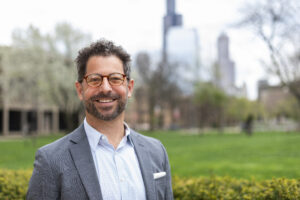Story by Suzanne Hanney of Streetwise
“Austin has one of the highest levels of lead in the city,” said Patrick MacRoy, program director at the Chicago Department of Public Health Childhood Lead Poisoning Prevention Program. The toxic effects of lead poisoning are well-established but there is help for area residents to combat the problem.
Lead awareness consultants from Westside Health Authority provide lead awareness training in the city. Delano McIntyre and LeShauna Carr have provided 30-60 minute programs in Austin, East & West Lawndale and Humboldt Park designed for children and adults. The youth programs, targeted for ages 3-9, include interactive activities and gifts. Adult programs include a raffle prize.
McIntyre and Carr’s lead programs have been shown at churches, schools and community centers. Their hope is that through education, health risks can be minimized.
They explain to audiences the dangers of lead poisoning, which can cause permanent health problems for children, pregnant women and other adults. For children younger than 6 years old, the damage is more extreme, since young bodies are still developing.
McIntyre warns that if a child suddenly exhibits hyperactivity, the cause could be related to lead poisoning. Lead poisoning can also hurt a child’s brains, kidneys and other organs, causing learning and behavioral problems.
Health problems include Attention Deficit Hyperactivity Disorder (ADHD), asthma, bronchitis, and worsening of sickle cell anemia. The impact of lead poisoning can potentially cause death. Yet lead poisoning is totally preventable.
How prevalent is lead poisoning? According to MacRoy, the city health department’s preliminary statistics from 2006 found that about 2.9 percent of all children in Chicago were identified with lead poisoning. This is a significant decrease from 2001, when 11 percent of the children tested in Chicago were identified with lead poisoning.
However, lead levels are much higher for children on Chicago’s West and South sides. These higher lead levels include:
- Austin: 5.4% of all children
- North Lawndale: 4.4% of all children
- South Lawndale: 2.2% of all children
- Humboldt: 4.5% of all children
- East & West Englewood: 6.1% & 6.2% of all children
Why do lead poisoning levels vary?
“The use of lead paint was banned in 1978,” McIntyre explained. “But many of the older buildings in Austin (and other areas) haven’t been rehabbed; they still contain old paint.”
Instead of removing the old paint with paint thinner, a new coat of paint is applied as a temporary cover up. As the newer paint peels and cracks, especially around windows, residents become exposed to lead from the original paint. Often, paint dust on the window track will blow into the house.
“Those at highest risk are kids,” said McIntyre. “Babies keep 50 percent of what they take in their bodies. Children, especially infants and toddlers, may walk, crawl or even touch their hands on it. Adults, on the other hand, only retain about 25-30 percent of what they take in.”
Chicago’s Lead Poisoning Prevention Program describes how lead enters the body after it is ingested or inhaled. Its report indicates, “Most children are exposed to lead from chipping, peeling, or flaking lead-based paint, lead dust, and soil with lead in it. Lead dust or lead-contaminated soil can get on toys and hands. It gets into bodies when children put their dirty hands or toys into their mouths. Children can also be lead poisoned by chewing or sucking on painted surfaces or paint chips. Adults often get exposed by breathing lead dust or lead fumes at work or while doing a hobby.”
“The numbers are down from 10 years ago,” MacRoy said. “We’re making progress, but we still have a ways to go.”
To schedule a free lead awareness program, please call WHA‘s lead consultant, LeShauna Carr: 773-378-5034.
Categories:
South Side Mind & Body Public West Side
Tags:
chicago department of public health childhood lead poisoning prevention program lead poisoning westside health authority






Be First to Comment